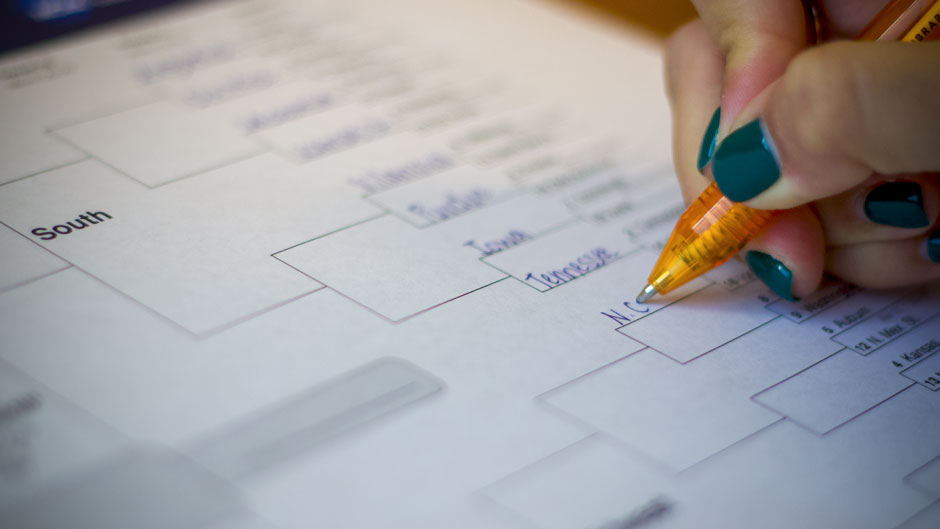Some people flip a coin. Others decide by choosing their favorite mascot or school colors. And for the self-proclaimed statistical gurus, it all comes down to a formula based on a wins and losses and strength of schedule.
But whichever method fans use in their attempt to fill out a perfect NCAA men’s basketball tournament bracket, it’s as sure as death and taxes that no one will do so.
That’s because the probability of pulling off such a feat is something on the order of one in a quintillion or more—or, as University of Miami professor of mathematics Chris Cosner puts it, a one followed by 18 zeros.
So how is that probability determined? That’s where the math comes in.
Figuring out how those chances are calculated is actually quite simple, requiring nothing more than very basic probability and some calculations with logs, said Cosner.
“It’s easy if you know the number of games, assume the outcome of each game is independent of the outcomes of other games, and you have a fixed probability of picking the winner in each game,” he explained. “A rule of probability is that the probability of several independent events happening is equal to the product of the probabilities of each event separately.”
In a single elimination tournament with 64 teams (not counting the four play-in games) there must be 63 teams that lose, so there must be 63 games. “If you are simply picking winners by guessing, like flipping a coin, then the probability of being right for any single game is one out of two. So the probability of getting a perfect bracket is just one out of two raised to the 63rd power,” said Cosner.
Such methods are used extensively in science, business, medicine, industry, and government, and they form the most basic foundations of statistics, said Cosner.
“Where things get interesting is when you are trying to raise your probability of picking winners from one out of two to, say, two out of three,” he said. “To do that, people have developed various ways of ranking teams. That involves taking data on things like wins versus losses, margins of victory in wins, and strength of schedule, and trying to do something like a statistical analysis of those that helps you pick winners. That’s where statistical methods and algorithms come into the picture.”
Those methods use detailed applications of sophisticated but standard statistical estimates based on disciplines such as Bayesian statistics (in which mathematical tools are used to update a belief about random events in light of seeing new data or evidence about those events) or regression analysis (a powerful statistical method that allows one to examine the relationship between two or more variables of interest).
“Those types of methods are widely used in science and medicine when people do experiments and analyze data,” said Cosner. “Most mathematicians don't know them well, because we mostly don’t work with data, but these sorts of methods might be taught in advanced undergraduate or basic to medium-level graduate courses in statistics.”
Cosner, a Cooper Fellow in UM’s College of Arts and Sciences whose area of specialty is mathematical biology, also noted the rising use of artificial intelligence and machine learning in bracketology as well as other areas. “Those areas are currently under active development by mathematicians, computer scientists, and statisticians, and by data scientists who use combinations of math, statistics, and computer science,” he said. “As can be seen by reading science news, or business news, or sometimes even just regular news, AI and machine learning are considered to be important emerging areas of development in the mathematical sciences and are expected to be important in many practical applications—from driverless cars to computer-assisted diagnoses in medicine).”
A few other stats to leave you with:
• In 2016, more NCAA tournament brackets (some 70 million) were filled out than there were votes cast for any single candidate in that year’s presidential election.
• Through 48 of the 63 games of the 2019 tournament, only one perfect bracket remains across all major online bracket games going into this week’s Sweet 16 games.
• In the history of the NCAA tournament, no one has ever achieved a verifiably perfect bracket.

